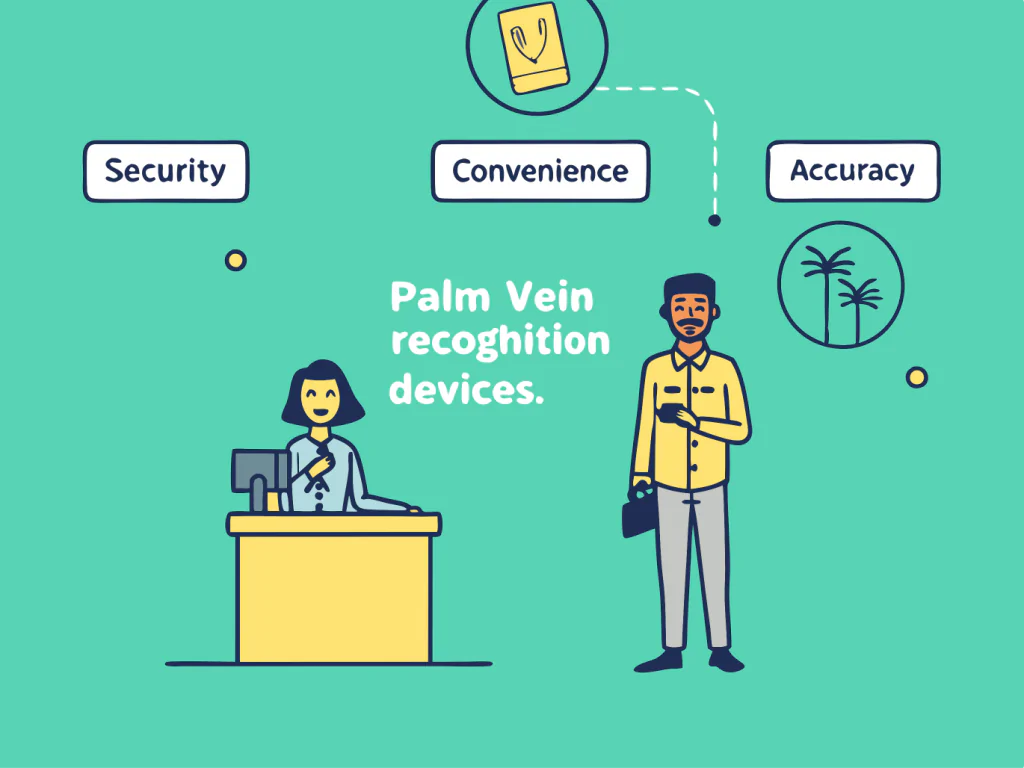I work with banks often. One of the biggest challenges they face is identity fraud. They need a better way to verify who people are. That’s why many are turning to palm vein authentication.
Palm vein recognition devices offer banks high security, accuracy, and contactless operation. These devices help verify customer identity in KYC processes and secure banking transactions. SDKs and APIs make them easy to integrate into banking systems.
A few years ago, I attended a fintech forum where banks were worried about fraud. One bank started using palm vein scanners. It worked so well that others followed. Let me explain why.
[Table of contents]
- What Is a Palm Vein Scanner and How Does It Work?
- Why Is Palm Vein Authentication More Secure for Banking Systems?
- Palm Vein vs Fingerprint Scanners in Bank KYC: Which Is Better?
- What Are the Integration Advantages of Palm Vein Devices for Banks?
- What Are the Disadvantages of Palm Vein Technology in Banking?
- What Is the Price of Palm Vein Scanners for Secure Banking Verification?
- Summary
What Is a Palm Vein Scanner and How Does It Work?
Banks always ask me how the technology works. I explain it in simple terms.
A palm vein scanner captures the unique vein patterns inside a person’s hand using near-infrared light. It verifies identity by comparing these patterns to stored records.
Banks like that it’s fast and easy. A customer holds their hand over the scanner. The machine reads the veins and matches them to the database.
How Palm Vein Scanning Works
- The user places their palm over the scanner.
- The scanner shines infrared light onto the palm.
- Blood in the veins absorbs the light, showing the vein pattern.
- The scanner creates a secure digital map of the veins.
- The system matches it to stored identity data.
Why It’s Simple
- No contact
- Fast process (under one second)
- Accurate in many conditions
Why Is Palm Vein Authentication More Secure for Banking Systems?
I have seen banks struggle with fraud prevention. Palm vein scanners helped solve that problem.
Palm vein authentication is highly secure. Vein patterns are inside the body, so they cannot be copied easily. Banks use this for KYC and to protect transactions.
It stops identity fraud because it’s hard to fake a vein pattern. I tell banks they get peace of mind knowing their customers are who they say they are.
Security and Privacy
- Internal patterns are private
- Data is encrypted
- Very low false acceptance rate (FAR)
- Nearly impossible to forge
Compared to Other Biometric Methods
| Biometric Method | Risk of Fraud | Accuracy | Contactless |
|---|---|---|---|
| Palm Vein | Very Low | High | Yes |
| Fingerprint | Medium | Medium | No |
| Facial | Medium | Medium | Yes |
Palm Vein vs Fingerprint Scanners in Bank KYC: Which Is Better?
I’ve worked with both types of scanners. Banks often ask which is better for them.
Palm vein scanners offer better security and hygiene than fingerprint scanners. They are more accurate and work well in bank KYC and transaction verification.
One bank told me they had trouble with fingerprint scanners. Many users had worn-down fingerprints. Switching to palm vein solved the issue.
Key Differences
- Palm vein scanning works in all conditions
- Fingerprints can be worn or damaged
- Palm vein is contactless, more hygienic
Feature Comparison
| Feature | Palm Vein | Fingerprint |
|---|---|---|
| Security | Very High | Medium |
| Accuracy | Very High | Medium |
| Contactless | Yes | No |
| User Acceptance | High | Medium |
What Are the Integration Advantages of Palm Vein Devices for Banks?
Integration is always a big concern for bank IT teams. I’ve helped them with this many times.
Palm vein devices come with SDKs and APIs. These tools make it easy for banks to connect them to their core banking systems and apps.
I once worked on a project where we integrated palm vein authentication for transaction approvals in mobile banking. It was fast and smooth.
Integration Features
- Works with Windows, Linux, Android
- SDKs for different programming languages
- APIs for secure data exchange
- Supports multi-factor authentication (MFA)
Real-World Example
A bank integrated palm vein scanners at branch kiosks. Customers used it for account opening and verifying large transactions. It reduced wait times by 30%.
What Are the Disadvantages of Palm Vein Technology in Banking?
No system is perfect. I always tell my clients to weigh the pros and cons.
Palm vein scanners cost more than fingerprint devices. They also need special hardware and staff training.
Some banks worry about the higher upfront costs. But in my experience, they often find the security and fraud prevention worth it.
Common Issues
- Higher device cost ($500 to $2000)
- Extra training for staff
- Limited vendor options compared to fingerprints
Long-Term Benefits
- Reduced fraud losses
- Better customer experience
- Stronger compliance with KYC regulations
What Is the Price of Palm Vein Scanners for Secure Banking Verification?
Price is one of the first things banks ask me about in procurement meetings.
Palm vein scanners for banks range from $500 to $2000. Bulk orders and vendor deals can lower costs.
I helped a bank get better pricing by negotiating at an industry event. They ordered 500 units for branches across the country.
Price Factors
- Model and brand
- Volume discounts
- Software and support packages
- Compliance certifications (financial-grade security)
Example Pricing
| Vendor | Unit Price | Bulk Discount | Financial Compliance |
|---|---|---|---|
| Vendor A | $1800 | Yes | Yes |
| Vendor B | $1500 | Yes | Limited |
| Vendor C | $2000 | No | Yes |
Summary
Banks choose palm vein authentication because it offers secure, fast, and contactless identity verification. It works for KYC and transaction protection.



